When searching for the best personal trainer in London be inquisitive as, there are many factors that need to be carefully considered before deciding with whom you are going to work with.
Do the personal training London services of your trainer promote evidence based fitness, nutrition and have an advanced biomechanical understanding about movement and injury rehabilitation?
Your time should be only spent working out with the most experienced London personal trainers.
You are very busy and your health, fitness and time are very valuable.
Check out your personal trainer’s knowledge by carefully assessing their exercise tutorials published on their website.
- Are these comprehensive, considering injury risks?
- Are their exercise tutorials supported by science and appropriately referenced?
My private clients uniquely benefit from comprehensive A to Z exercise tutorials just like this A to Z Push Ups Tutorial I made it now available for you.
If this can help your friends or partner don’t forget to share this comprehensive exercise tutorial with them.
How To Do Push Ups Correctly
To perform a basic pushup, begin by bringing the body into a plank position, placing the hands flat on the ground and shoulder-width apart.
The legs are straight, with the toes on the ground, and the spine is in a neutral position.
Engage the abdominals to help maintain the alignment of the spine and bring the shoulder blades back and down in order to stabilize the shoulder girdle.
Next, inhale as you bend the elbows, lowering the chest to hover directly above the floor.
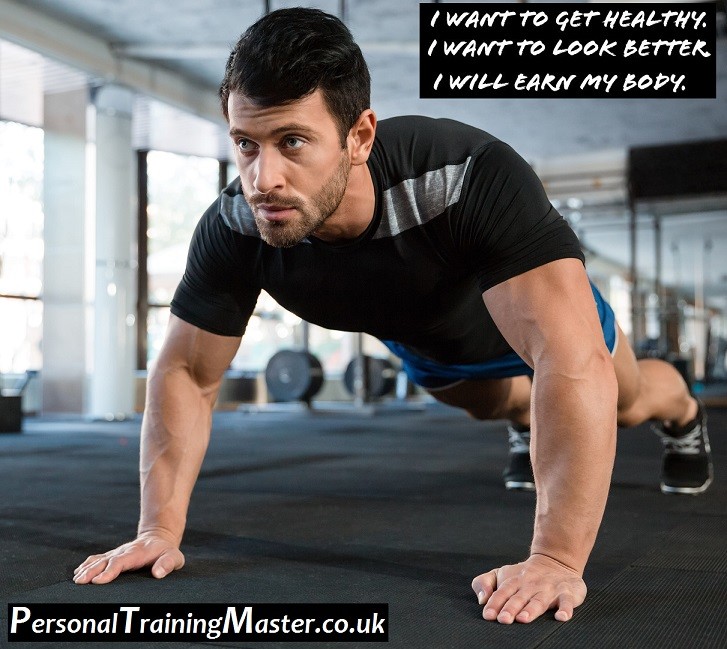
Fig 1. Begin your push up by bringing the body into a plank position, placing the hands flat on the ground and shoulder-width apart.
Hold the torso in the same neutral alignment throughout the descent.
To return back up to the plank position, breathe out while extending the arms.
The spine, including the neck, should remain in a neutral position throughout the movement, the legs should stay straight and the hips should be in the same plane as the shoulders and lifted off the ground through the entire exercise.
The elbows should not flare out far from your sides but instead should be kept closer to torso, forming an approximate 45-degree angle to the body (24).
INTRODUCTION
The pushup is a common exercise used to improve strength in the upper body, particularly in the chest muscles.
A traditional pushup is a bodyweight exercise, meaning the load is determined by the bodyweight of the individual performing the pushup (6).
Bodyweight exercises are an excellent way to increase strength without the use of any extra equipment, making them extremely cost effective.
And when these are performed correctly under the guidance of an elite personal trainer in London the body weight exercises create very impressive results.
Furthermore, these types of movements can be done practically anywhere and thus, are a convenient form of strength training.
Strength training is vital to building and maintaining lean muscle mass, which typically declines with age (25).
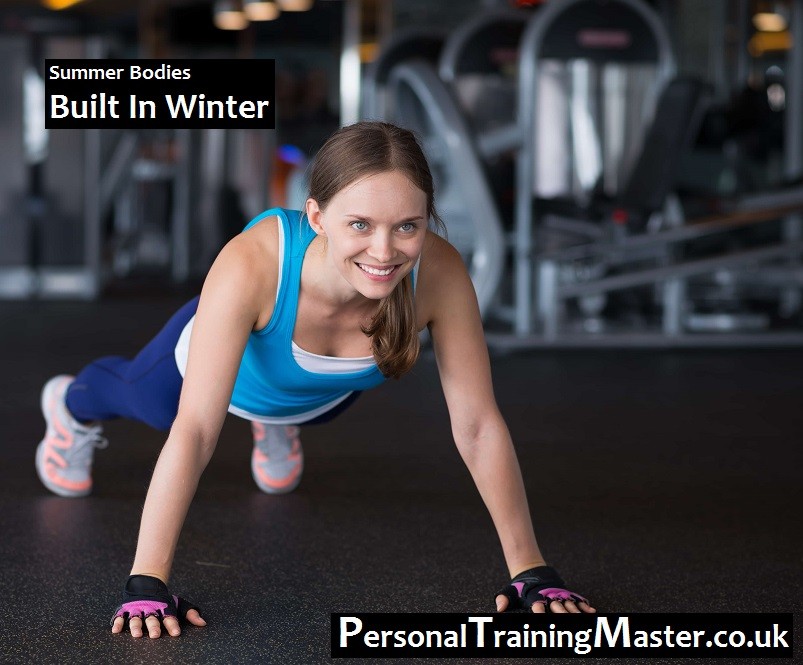
Fig 2. Prepare your body and enjoy your new body image, health and summer more. Summer bodies are built during the winter.
Moreover, engaging in a regular resistance-training regime is beneficial for weight loss because with an increase in lean muscle tissue there is also an increase in basal metabolic rate, or the number of calories used when the body is simply functioning in a resting state, without any additional activity (2,14).
Like other bodyweight movements, pushups require both mobility and stability and are a very efficient and functional exercise because they utilise the entire body, including the engagement of the core muscles (9).
You can safely follow the best certified personal trainer program provided by one of the elite personal trainer in London at the comfort of your own home or office and achieve the best results.
ANATOMY OF A PUSHUP
A pushup incorporates flexion and extension at the shoulder and elbow joints and retraction and protraction of the scapulae, or shoulder blades (6).
The prime mover muscles (or muscles mainly responsible for the concentric phase of the movement) involved in a pushup are the pectoralis major (the chest muscles), triceps brachii (the muscles along the back of the arm that perform elbow extension) and the anterior deltoids, or front shoulder muscles (the muscles that perform shoulder flexion) (31).
Additionally, there are multiple stabilizer muscles recruited during a pushup, making it an all around full-body exercise (13).
PUSHUPS AND THE CHEST AND ARMS
In the lowering phase, or eccentric phase, of a pushup, the pectoralis major (known simply as the ‘pecs’) is in a lengthened position, and in the concentric contraction of the exercise, when the body is lifted back up, the pecs are shortened.
In the same way, the triceps muscles are lengthened in the eccentric contraction and shortened in the concentric contraction of a pushup (18).
The pectoralis major is the largest chest muscle and has three heads, which are parts of the same muscle with different attachment sites.
When you exercise with the best personal trainer in London you will achieve the best results and see progress much faster.
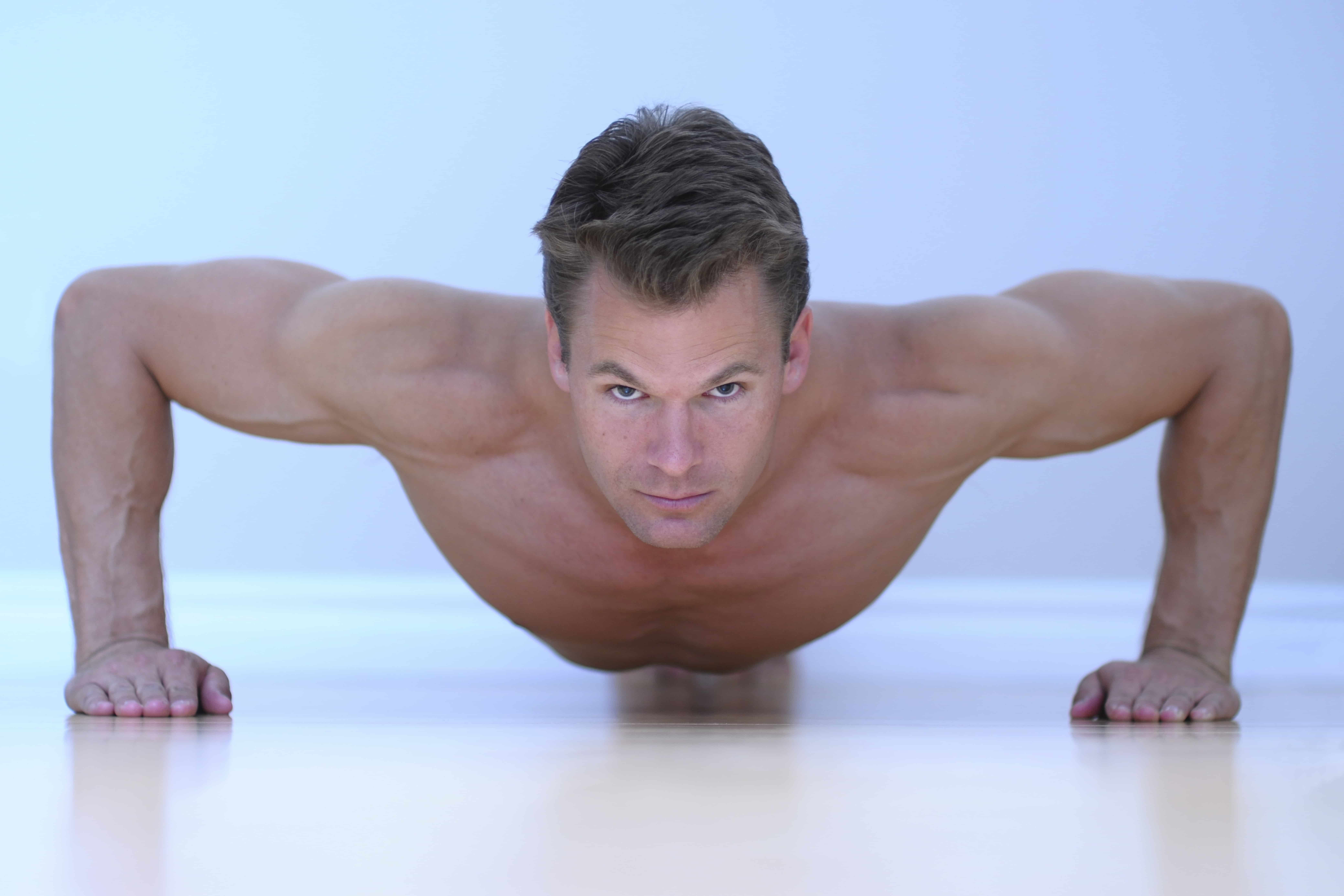
Fig 3. Push ups is a whole body weight exercise. It develops your chest, arms, shoulders recruiting more core muscle.
The clavicular head of the pectoralis major connects the muscle of the upper chest to the clavicle, or collarbone, and the humerus, or upper arm bone.
If you don’t want to struggle with any of the anatomy related names you can hire an elite personal trainer in London as all Londoners who want to achieve the best results do.
The sternal head attaches the chest muscles to the sternum (the bone in the center of the chest) and the humerus.
Finally, the abdominal head makes up the lower portion of the pectoralis major (31).
The weight of the body acts as the load in a pushup, and therefore, by varying the position of the body, specific portions of the pectoralis major can be targeted (8).
Likewise, altering the position of the hands plays a role in the emphasis placed on the triceps and deltoids during a pushup (5).
PUSHUPS AND THE SHOULDERS
Performing pushups with improper technique, such as allowing the shoulders to round forward or rise up toward the ears, can put strain on the shoulder joint and lead to injury.
In particular, scapular stabilisation, or stabilization of the shoulder blades, is critical to avoid training-related injuries in the shoulder joint (27).
Throughout the pushup movement, there are several muscles functioning as stabilisers for the shoulder (17).
The rotator cuff muscles, comprised of the supraspinatus, infraspinatus, teres minor and subscapularis, are small muscles that attach to both the shoulder blade and the upper arm bone.
Together these four muscles provide stability in the glenohumeral joint (the articulation of the scapula and humerus) by keeping the head of the humerus plugged into the shoulder socket (22).
The posterior, or rear, deltoid (the muscle located on the back of the shoulder) and the latissimus dorsi, the long muscles that run down the sides of the upper back, also help to maintain stability in the shoulders (23), along with the serratus anterior, which attaches to both the ribs and the scapula, and keeps the medial border, or inner edge, of the scapula from winging (protruding from the back instead of laying flat) (16).
Additionally, the trapezius (comprised of the upper, middle and lower trapezius) and rhomboids are muscles in the middle and upper back that attach to both the vertebrae of the spine and the scapulae and assist in the stabilisation of the shoulders by retracting, or pulling together, the shoulder blades (30).
Clients suffering from shoulder injuries prefer to hire a personal trainer in London teaching and training them how to exercise safe and do Push-Ups correctly without risking further shoulder impingements or low back injuries.
PUSHUPS AND THE LEGS AND CORE
During a pushup, the quadriceps, a group of four muscles located on the front of the thighs, work to maintain a straight-leg position by keeping the knees extended, while the core muscles (including the erector spinae, which holds the spine upright, and the abdominals) are recruited to help hold a neutral posture through the torso.
Activation of the gluteal muscles (the muscles of the buttocks) is also important in order to maintain stability in the pelvis throughout the pushup movement (6).
CONTRAINDICATIONS
Most people are able to find a variation of the pushup exercise that is suitable to their individual skill level and needs.
However, there are special populations that should not perform pushups.
Is your health worth investing?
If the answer is Yes, you can hire a personal trainer in London and learn “how to Push-Up correctly” safe avoiding shoulder, wrist, biceps, elbow or lower back injury risks.
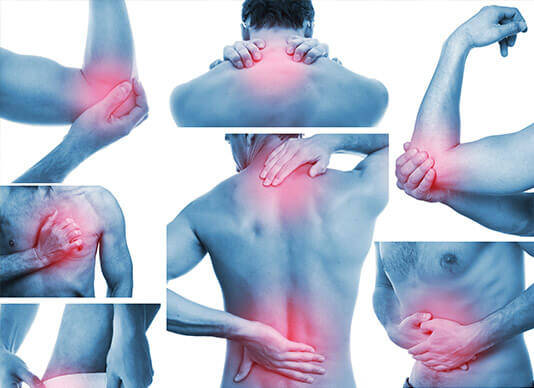
Fig 4. If you experience shoulder pain or had a rotator cuff or a biceps tendon surgery avoid performing push up or perform push ups under supervision custumised to your challenges and needs.
Individuals experiencing acute shoulder pain are discouraged from doing pushups, due to the fact that the movement can further exacerbate shoulder injuries.
Moreover, people who have recently undergone rotator cuff or biceps tendon surgery should not perform pushups due to the increased risk of injury that comes with the inability to stabilise the scapulae during a pushup (4).
There is more to the push ups contraindications side but, for now these two I just highlighted out gives you good information you must take into account.
PUSHUP VARIATIONS
There are numerous variations on the basic pushup, making this exercise adaptable to the unique requirements, goals and skill level of the individual.
Some of the variations will increase the intensity of the movement, requiring a greater amount of muscle fiber recruitment, while other variations will help to modify the basic exercise and make it more accessible to individuals with a beginner’s skill level (6).
PILATES PUSHUP
Pilates pushups are performed at a slower and more deliberate pace and therefore, demand a greater amount of muscular stabilisation and control and stronger core activation than an average pushup (15).
In this variation, you begin in a standing position with a neutral spine and the legs together.
Tuck the chin towards the chest and continue to roll down sequentially through each vertebrae of the spine until your hands can touch the floor.
Walk the hands forward in four steps to form a plank position with the body, aligning the wrists directly underneath the shoulders.
Next, lower the body towards the ground by bending the arms, taking three seconds to complete the eccentric phase. The elbows are kept next to the sides of the body and should not flare out away from the torso.
Straighten the elbows and, with the same slow tempo (taking three seconds), push back up to a plank position to complete one repetition.
Repeat lowering and lifting the body in a pushup for three to five repetitions, then draw the pelvis upwards and, in four steps, walk the hands back to meet the feet.
Finish by planting through the feet and rolling the spine, in a sequential fashion, back up to the standing position.
The trunk and shoulders should remain stable throughout the exercise.
The elbows should graze the rib cage throughout the movement, both in the descending and the lifting phase, which works the triceps more intensely than in a standard pushup (26).
Pilates pushups are very effective also more challenging – this is why when you hire a personal trainer London you exercise safe, achieve more and reach your goals faster.
PUSHUP WITH KNEES BENT AND LEGS CROSSED
Bent knee pushups are the ideal modification for beginners and people who need an easier form of the basic pushup exercise.
By keeping the knees on the ground throughout the movement, this pushup variation decreases the amount of body weight being used for resistance and offers a way to build strength safely, without sacrificing proper form (12,17).
To perform this variation of a pushup, start on ‘all-fours’, with the hands and knees on the ground.
The hands are directly underneath the shoulders with the fingers pointing forward and the knees line up directly below the hips.
Next, walk the knees back and bring the body into a straight, diagonal line, from the knees to the spine, through the crown of the head.
Lift up the feet and cross the ankles.
There are many push up variations working on different muscles this is why when you hire a personal trainer in London you learn how to do Push Ups correctly and reach your fitness, and weight goals faster.
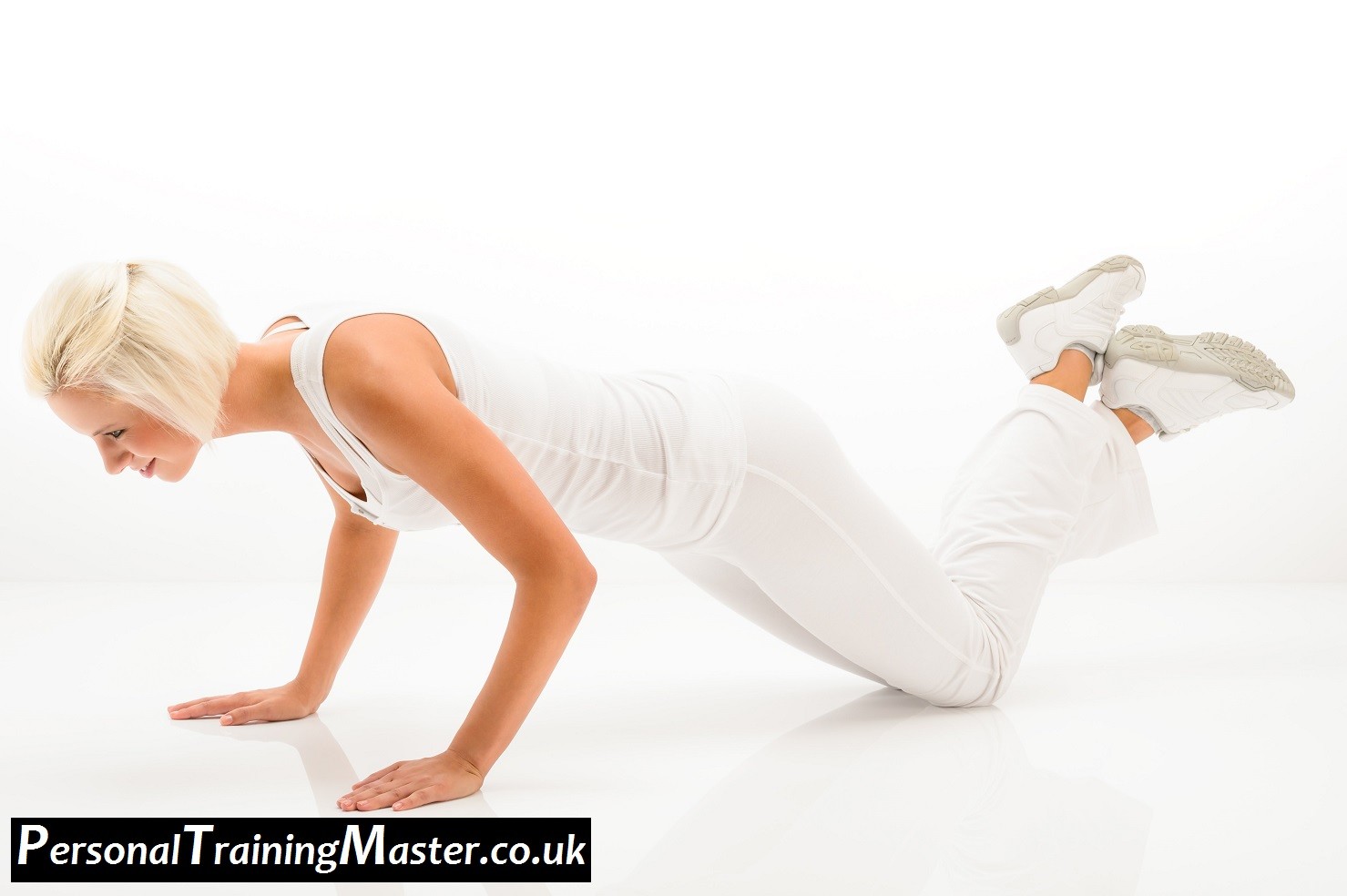
Fig 5. Push up with knees bent and legs crossed.
As in a standard pushup, draw the shoulder blades down and back and engage the abdominal muscles.
In a controlled fashion, bend the elbows and lower the body to hover right above the ground, maintaining the same hip and spinal alignment throughout the movement.
The elbows should stay relatively close to the body, not flaring out too far from the sides of the torso.
To lift back up to the starting position, engage the chest and arm muscles, press through the palms of the hands and exhale as you extend through the elbows.
INCLINE PUSHUP AT A TABLE OR WALL
Incline pushups are another effective variation for a beginning exerciser or anyone who needs to build strength before progressing to a regular pushup. Incline pushups reduce the amount of body weight being lifted, and in this variation, there is less stress on the shoulder, elbow and wrist joints (3, 29).
Using a wall is the least intense variation of the incline pushup, because the movement is more like a ‘push-away’, rather than a ‘push-up’, action.
This pushup is especially useful for older people or people who experience difficulty in getting up and down from the ground (28).
To perform pushups against a wall, begin by standing to face a wall and place the hands flat against the wall, in line with the shoulders.
Step backward, moving far enough away from the wall to be able to comfortably and fully extend through the arms while maintaining the body in a straight line from head to feet.
Engage the core muscles and set the scapulae back and down.
Next, bend the elbows and bring the body as close to the wall as possible.
Finish by pushing against the wall and exhaling as you straighten the arms.
If you live in Wimbledon area, an elite personal trainer in Wimbledon can help you to do Push Ups correctly, achieve your fitness or weight loss goals without risking any types of injuries.

Fig 6. Incline pushups variation reduces the amount of body weight being lifted, therefore there is less stress on the shoulder, elbow and wrist joints.
To increase the intensity of an incline pushup, simply lower the surface being used (21).
For example, instead of pushing against a wall, you can use a sturdy table, chair or the edge of a bed to push against.
The technique required for an incline pushup using a lower surface is similar to that of a wall pushup, except in this variation, the hands hold the edge of the table, chair, bed, etc., and the body forms a straight, diagonal line from the heels to the torso to the head.
The elbows slowly bend as you lower your body towards the surface in front of you, and the elbows extend as you lift the body back up to the starting position.
The spine should remain straight, with the core muscles braced, throughout the movement.
If you are not able to perform the Pushups correctly do not worry.
Hire a personal trainer near you and see the amazing results without risking any shoulder, biceps or lower back injuries.
DECLINE PUSHUP
Pushups with the feet elevated provide a more challenging variation of the basic pushup by increasing the amount of resistance provided by your bodyweight.
The more the feet are raised, the greater the load will be because a higher percentage of bodyweight must be lifted (11).
This will, in turn, increase the amount of muscle fibers activated to carry out the movement, and increased muscular recruitment has the added benefit of creating greater metabolic effects (13).
Decline pushups recruit more muscle fibers in the upper chest, targeting the clavicular head of the upper pecs, as well as in the anterior deltoids (19).
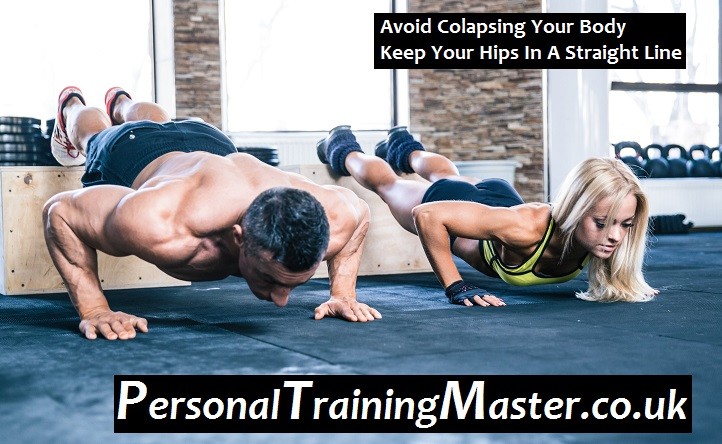
Fig 7. Declined push ups have a positive effects on your lymphatic system which is critical for your immune system.
Additionally, in an inverted position (where the legs are raised over the head), there is a decompression of the joints (particularly in the vertebrae of the spine), which is caused by the downward force of gravity.
This position also allows for improved lymphatic circulation by stimulating the movement of lymphatic fluid, which helps to flush out and detoxify the body.
An excess of toxic materials in the body can lead to illness, and the lymph nodes work with the immune system to filter these toxins.
Therefore, an efficient lymphatic system is critical for healthy immune function (1).
Proper execution of a decline pushup is similar to that of a conventional pushup, except in this variation, the feet are raised and placed on a surface, such as a bench or step.
Start with your hands and knees on the ground, placing the hands under the shoulders.
Reach the legs back one at a time, placing the feet to be supported on the elevated surface of choice.
Engage the core muscles, straighten the elbows and bring the body into a plank position, forming a straight line through the head, spine, hips and feet.
Stabilize the scapulae by drawing the shoulder blades down and back. Bend the arms and lower your body to hover right above the floor.
Press through the palms and push the body back up to the starting position, maintaining the body in the same alignment throughout the movement.
PUSHUP USING TWO HANDLES
Certain pieces of fitness equipment, known as pushup handles, have been specifically designed to increase the benefits of performing pushups.
Pushup handles are two bars that are gripped by the hands throughout the exercise, as opposed to placing your hands flat on the ground as in a traditional pushup (32).
A pushup using two handles is carried out in exactly the same way as a regular pushup, with the exception of your hand positioning.
When coming into the initial plank position, place your hands on the handles and then extend the legs and body back into a straight line.
Bend the elbows and bring the body as close to the floor as possible.
Then, straighten the arms and exhale as you return back up to the plank position. If you live in Limehouse or Canary Wharf area, you can hire a personal trainer Canary Wharf based – progress safe, achieving your fitness and weight loss results faster.
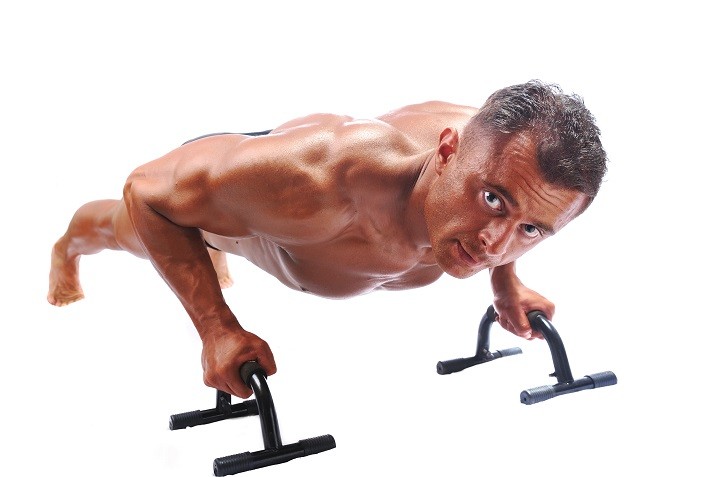
Fig 8. One of the main advantages to using pushup handles is that they help to limit the amount of stress placed on the wrists during a pushup.
When the hands are flat against the ground the wrists are put in a hyper-extended position, while using pushup handles allows the wrists to align in a more neutral position, taking pressure off of the wrist joint (32).
Pushup handles also increase the range of motion of the exercise, allowing the body to be lowered beyond the horizontal plane of the hands, which, in turn, increases the overall intensity of the movement as well as the amount of muscle fibers recruited and flexibility required to perform the exercise.
This increased range of motion can, however, put more strain on the shoulder joint, and therefore, scapular stabilization is extremely important when performing deeper pushups (32).
Another benefit to utilising pushup handles is that the direction of the wrists can be varied.
The palm of the hands can either be facing in toward each other or facing toward the feet.
Some varieties of pushup handles also rotate, allowing for both hand positions in one exercise.
To use rotating handles, begin with the hands gripping the handles and the palms facing the feet.
Lower the body toward the floor, and at the same, turn the handles, bringing the palms to face each other.
As you push the body back up to the starting position, simultaneously rotate the handles so that the knuckles point straight ahead and the palms face the feet again.
You can maximise your weight loss, health and fitness goals and increase your lean muscle mass by training with an elite personal trainer London based.
DECLINE PUSHUP USING TWO HANDLES
Decline pushups using two handles are a combination of regular decline pushups and pushups using two handles.
The difficulty of the exercise is significantly increased in this variation, because there is both an increase in load and range of motion (11, 32).
To do this exercise, hold the handles in your hands and kneel down with your back to a bench or step (the surface that will be used to elevate your feet).
Place the handles down on the ground in front of you, about shoulder-width apart, and reach the legs back one at a time to bring the feet onto the bench or step behind you.
Engage the core muscles and extend the arms, coming into a plank position.
Inhale as you slowly lower the body down toward the floor, bringing the chest in between the two handles.
Exhale as you press back up to a straight-arm position.
- Do you want to save precious time to spend with your family achieving your weight loss, fitness and health results faster?
- If you are living in Fulham area there is no point to travel away from your area, we recommend hiring a personal trainer Fulham based – we train you at your London chosen location.
PUSHUP WITH ONE LEG UP (ON FLAT TERRAIN)
Another advanced variation of the traditional pushup involves lifting one leg off the ground while performing a standard pushup.
This movement requires additional core strength, as well as upper body strength because there will be a higher percentage of bodyweight being lifted in this variation (4,11).
To begin, come into a standard plank position, with the hands flat to the floor and aligned underneath the shoulders, the arms and legs straight, and the toes on the ground.
The body should form one long line from the head to the feet.
Engage the abdominals and using the gluteal muscles, raise one foot off the ground and lift that leg up as high as you can without altering the neutral position of the hips or bending the leg.
Hold the leg in an elevated position as you bend the elbows, lowering the body to hover right above the ground.
Exhale, and press back up to the plank position, keeping the leg lifted throughout the entire movement.
Having an elite personal trainer in London at your end will help you do the Pushups correctly, and get the best health, weight loss and fitness results.
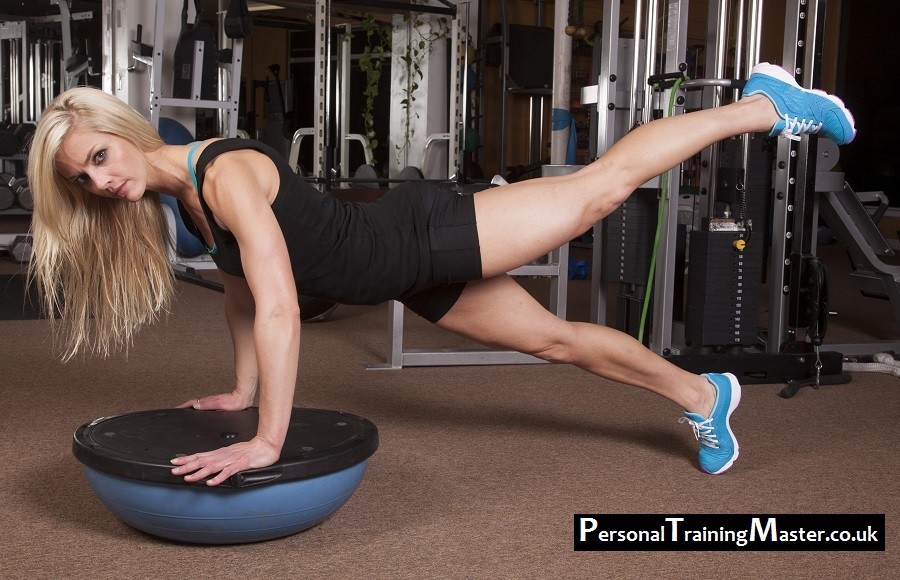
Fig 9. Here is a BOSU push up core progression with one leg up performed on a flat surface.
WIDE PUSHUP
Changing the position of the hands in a pushup can significantly alter the muscles worked in the exercise.
For instance, wide pushups involve the hands being positioned wider than shoulder-width apart.
This variation targets the chest muscles, particularly the muscles of the outer chest, while decreasing the recruitment of the triceps and deltoids (5).
A wide pushup is done in the same way as a traditional pushup, except for the hand positioning.
The hands should be placed wider than shoulder-width apart as you form a plank position with the body, aligning the feet, hips, spine and head.
Bend the arms to bring the chest down toward the ground (the elbows should not flare excessively from the sides of the body (3)), and return to the plank position by straightening the arms.
CLOSE PUSHUP POSITIONING
Positioning the hands close together in a pushup offers a greater challenge and puts more emphasis on the triceps and deltoids (5).
During a pushup with narrow hand placement, it is important to keep the elbows very close to the sides of the body throughout the movement (3).
To execute the close pushup position, start in a plank position, with arms and legs extended and the body in a straight line from head to heels.
Position the hands slightly closer than shoulder width apart.
If you have any shoulder injuries an elite personal trainer in London or an injury rehabilitation personal trainer will teach you how to do pushups correctly to reach your chest and arms strengths goals faster
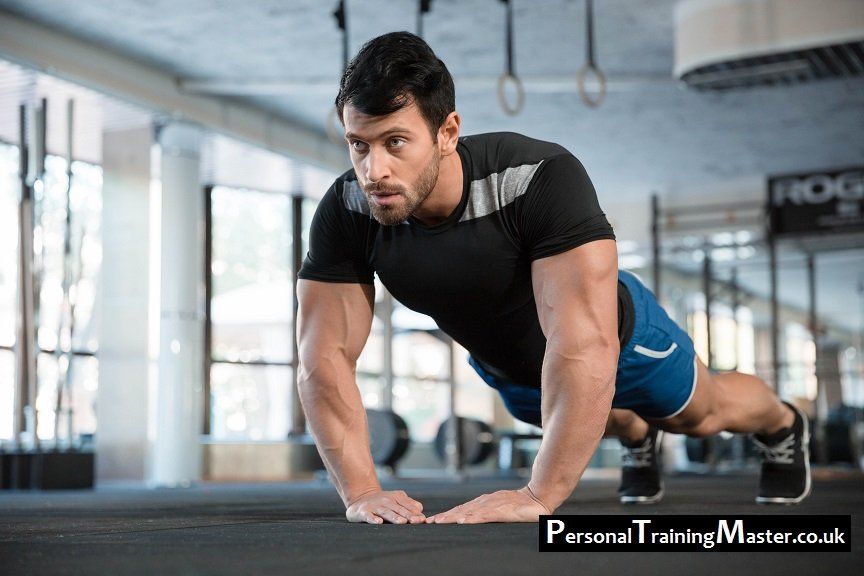
Fig 10. Close push ups and different palms positionng.
Inhale as you bend the elbows, lowering down until the body is near the floor, ensuring the elbows stay in tight toward the sides of the torso the entire time.
Exhale as you engage the triceps and the pecs; then press the body back up to the starting position.
SWISS BALL STABILITY PUSHUP
A swiss ball, also known as a stability or balance ball, can also be used to increase the intensity of a pushup.
This version of a pushup is more effective than a traditional pushup because pushups done on an unstable surface, such as a swiss ball, require an increase in muscle fiber activation, particularly in the core muscles, in order to maintain balance and stability throughout the movement (7,9).
There are two basic ways to use the swiss ball in a pushup.
One form of the exercise is to elevate your feet on the ball, much like in a regular decline pushup.
To perform this movement, kneel down on the floor in front of a swiss ball.
Bring your body onto the ball and roll forward until your hands touch the floor on the other side of the ball.
Walk your hands out on the floor, allowing the ball to roll down your body until it reaches your shins and feet.
To make the exercise easier, allow more of your pelvis and legs to remain supported by the ball.
This push up variation is very challenging.
You can train with an elite personal trainer in London if you want to avoid shoulder or back injuries and achieve your chest and arms strength goals faster.
For a greater challenge, walk forward until only your feet are resting on top of the ball.
The body should be in a straight line from head to heels and your palms should be flat on the ground, aligned under the shoulders.
Bend your elbows to bring the chest right above the floor.
To return back to the plank position, exhale as you straighten the arms.
The other variation is to put your hands on the ball and perform a pushup movement facing the ball.
To do this exercise, bring your chest onto the swiss ball and position your hands right outside of your chest.
Engage the core and stabilise the shoulder blades.
Curl the toes under on the floor behind you and straighten the legs.
Press up and straighten the elbows.
Once the arms are straight, hold the position for a few seconds, and then bend your elbows and control your body down to hover over the ball.
Perform this push up variation under supervision of an elite personal trainer in London to minimise your injuries risks.
PLYOMETRIC PUSHUP
This is a highly advanced form of a pushup because it involves plyometric, or explosive, movement.
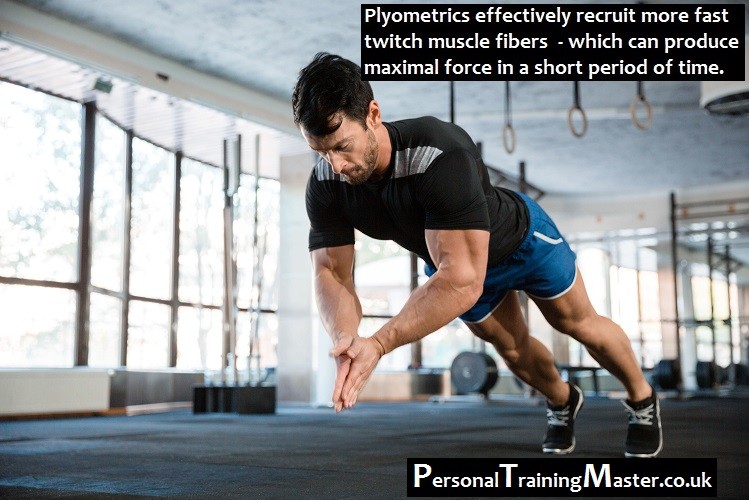
Fig 11. Plyometric push up
Plyometrics effectively recruit more fast-twitch muscle fibers (which can produce maximal force in a short period of time) and are useful exercises for building speed and strength and improving athletic performance (10, 20).
To perform a plyometric pushup, begin in a plank position with your arms and legs extended.
The body should be in a straight line from the head to the feet. Bend the arms and lower the body toward the floor.
When your body is hovering right above the ground, push yourself back up with a fast, explosive movement and simultaneously pick your hands up off the ground for a moment.
Land your hands back down on the ground with the elbows bent, controlling the descent, and immediately repeat the movement again.
If the plyometric exercise is taught and performed under the supervision of the best personal trainer in London, you will achieve amazing results avoid injuries and progress faster.
PUSHUP WITH CLAPPING HANDS
A pushup with clapping hands is a more challenging version of the basic plyometric pushup (20).
In this variation, the lowering phase is performed in the same way as a basic pushup.
However, once the chest reaches the ground, the lifting phase involves forcefully pressing upward, lifting the hands off the ground and quickly clapping them together.
Finish in the same way as a basic plyometric pushup, landing with the hands on the ground and the elbows bent and controlling the downward movement.
REFERENCES
- Allen, J, Montalto, M, Lovejoy, J, and Weber, W. Detoxification in naturopathic medicine. Journal of Alternative and Complementary Medicine. 17(12): 1175-1180, 2011.
- Anderson, JW, Konz, EC, Frederich, RC, and Wood, CL. Long-term weight-loss maintenance: a meta-analysis of US studies. The American Journal of Clinical Nutrition. 74(5): 579-584, 2001.
- Chou, P. Biomechanical analysis of the elbow joint loading during push-up. Biomedical Engineering: Applications, Basis and Communications. 20(4): 197, 2008.
- Coburn, JW and Malek, MH. NSCA’s Essentials of Personal Training– Second Edition. Champaign, IL: Human Kinetics Publishers, 2007.
- Cogley, R, Archambault, T, Fibeger, J, Koverman, M, Youdas, J, and Hollman, J. Comparison of muscle activation using various hand positions during the push-up exercise. Journal of Strength and Conditioning Research. 19: 628-633, 2005.
- Contreras, B, Schoenfeld, B, Mike, J, Tiryaki-Sonmez, G, Cronin, J, and Vaino, E. The biomechanics of the push-up: implications for resistance training programs. Strength and Conditioning Journal. 34(5): 41-46, 2012.
- Dyrek, AJ. Agonist and stabilizer muscle activity during a push up on unstable surfaces. UNLV Theses/Dissertations/Professional Papers/Capstones. Paper 1083, 2011.
- Ebben, WP, Wurm, B, VanderZanden, TL, Spadavecchia, ML, Durocher, JJ, Bickham, CT, and Petushek, EJ. Kinetic analysis of several variations of push-ups. The Journal of Strength and Conditioning Research. 25(10): 2891-2894, 2011.
- Escamilla, RF, Lewis, C, Bell, D, Bramblet, G, Daffron, J, Lambert, S, Pecson, A, Imamura, R, Paulos, L, and Andrews, JR. Core muscle activation during swiss ball and traditional abdominal exercises. Journal of Orthopaedic and Sports Physical Therapy. 40(5): 265-276, 2010.
- Garcia-Masso, X, Colado, JC, Gonzalez, LM, Salva, P, Alves, J, Tella, V, and Triplett, NT. Myoelectric activation and kinetics of different plyometric push-up exercises. Journal of Strength and Conditioning Research. 25(7): 2040-2047, 2011.
- Ghigiarelli, JJ. Advanced loading variations in the push-up exercise. Strength and Conditioning Journal. 35(4): 107-110, 2013.
- Gouvali M and Boudolos, K. Dynamic and electromyographical analysis in variants of push-up exercise. Journal of Strength and Conditioning Research. 19: 146-151, 2005.
- Haff, GG and Triplett, NT. Essentials of Strength Training and Conditioning – Fourth Edition. Champaign, IL: Human Kinetics Publishers, 2015.
- Jakicic, JM. The role of physical activity in prevention and treatment of body weight gain in adults. The Journal of Nutrition. 132(12): 3826S-3829S, 2002.
- Kloubec, JA. Pilates for improvement of muscle endurance, flexibility, balance, and posture. The Journal of Strength and Conditioning Research. 24(3): 661-667, 2010.
- Ludewig, PM, Hoff, MS, Osowski, EE, Meschke, SA, and Rundquist, PJ. Relative balance of serratus anterior and upper trapezius muscle activity during push-up exercises. American Journal of Sports Medicine. 32(2): 484-493, 2004.
- Maenhout, A, Van Praet, K, Pizzi, L, Van Herzeele, M, and Cools, A. Electromyographic analysis of knee push up plus variations: what’s the influence of the kinetic chain on scapular muscle activity? British Journal of Sports Medicine. 44: 1010-1015, 2010.
- Maeo, S, Chou, T, Yamamoto, M, and Kanehisa, H. Muscular activities during sling- and ground-based push-up exercise. BMC Research Notes. 7:192, 2014.
- Marcolin, G, Petrone, N, Moro, T, Battaglia, G, Bianco, A, and Paoli, A. Selective activation of shoulder, trunk, and arm muscles: a comparative analysis of different push-up variants. Journal of Athletic Training. 50(11): 1126-1132, 2015.
- Moore, LH, Tankovich, MJ, Riemann, BL, and Davies, GJ. Kinematic analysis of four plyometric push-up variations. International Journal of Exercise Science. 5(4): 334-343, 2012.
- Osbourne, R. Pull your own weight: variations on the push-up. Strength and Conditioning Journal. 11(1): 28-29, 1989.
- Paine, R and Voight, ML. The role of the scapula. International Journal of Sports Physical Therapy. 8(5): 617-629, 2013.
- Sandhu, JS, Mahajan, S, and Shenoy, S. An electromyographic analysis of shoulder muscle activation during push-up variations on stable and labile surfaces. International Journal of Shoulder Surgery. 2(2): 30-35, 2008.
- San Juan, JG, Suprak, DN, Roach, SM, and Lyda, M. The effects of exercise type and elbow angle on vertical ground reaction force and muscle activity during a push-up plus exercise. BMC Musculoskeletal Disorders. 16:23, 2015.
- Seguin, R and Nelson, ME. The benefits of strength training for older adults. American Journal of Preventive Medicine. 25(3): 141-149, 2003.
- Shedden, M and Kravitz, L. Pilates: a corrective system of exercise. ACSM’s Health and Fitness Journal. 11(5): 7-12, 2007.
- Suprak, DN, Bohannon, J, Morales, G, Stroschein, J, and San Juan, JG. Scapular kinematics and shoulder elevation in a traditional push-up. Journal of Athletic Training. 48(6): 826-835, 2013.
- Suprak, DN, Dawes, J, and Stephenson, MD. The effect of position on the percentage of body mass supported during traditional and modified push-up variants. Journal of Strength and Conditioning Research. 25: 497-503, 2011.
- Topalidou, A, Dafopoulou, G, Klepkou, E, Aggeligakis, J, Bekris, E, and Sotiropoulos, A. Biomechanical evaluation of the push-up exercise of the upper extremities from various starting points. Journal of Physical Education and Sport. 12(1): 71-80, 2012.
- Tucker, SW, Campbell, BM, Swartz, EE, and Armstrong, CW. Electromyography of three scapular muscles: a comparative analysis of the cuff link device and a standard push-up. Journal of Athletic Training. 43(5): 464-469, 2008.
- Watkins, J. Structure and Function of the Musculoskeletal System. Champaign, IL: Human Kinetics Publishers, 1999.
- Youdas, JW, Budach BD, Ellerbursch JV, Stucky, CM, Wait, KR, and Hollman, JH. Comparison of muscle-activation patterns during the conventional push-up perfect-pushup™ exercises. Journal of Strength and Conditioning Research. 24(12): 3352-3362, 2010.
Disclaimer: This website and all its content is to be used for information purposes only. This website or any of its content or links to third parties does not diagnose, advise, treat or cure any ailments, illness or disease.
You agree to hold harmless the owner of this site for any action taken on your own without consulting your medical doctor first by using the information on the website for diagnostic, treatment, or any other related purposes. This is not medical advice. If you are suffering from any illness, disease or ailments please contact your doctor first and immediately.


